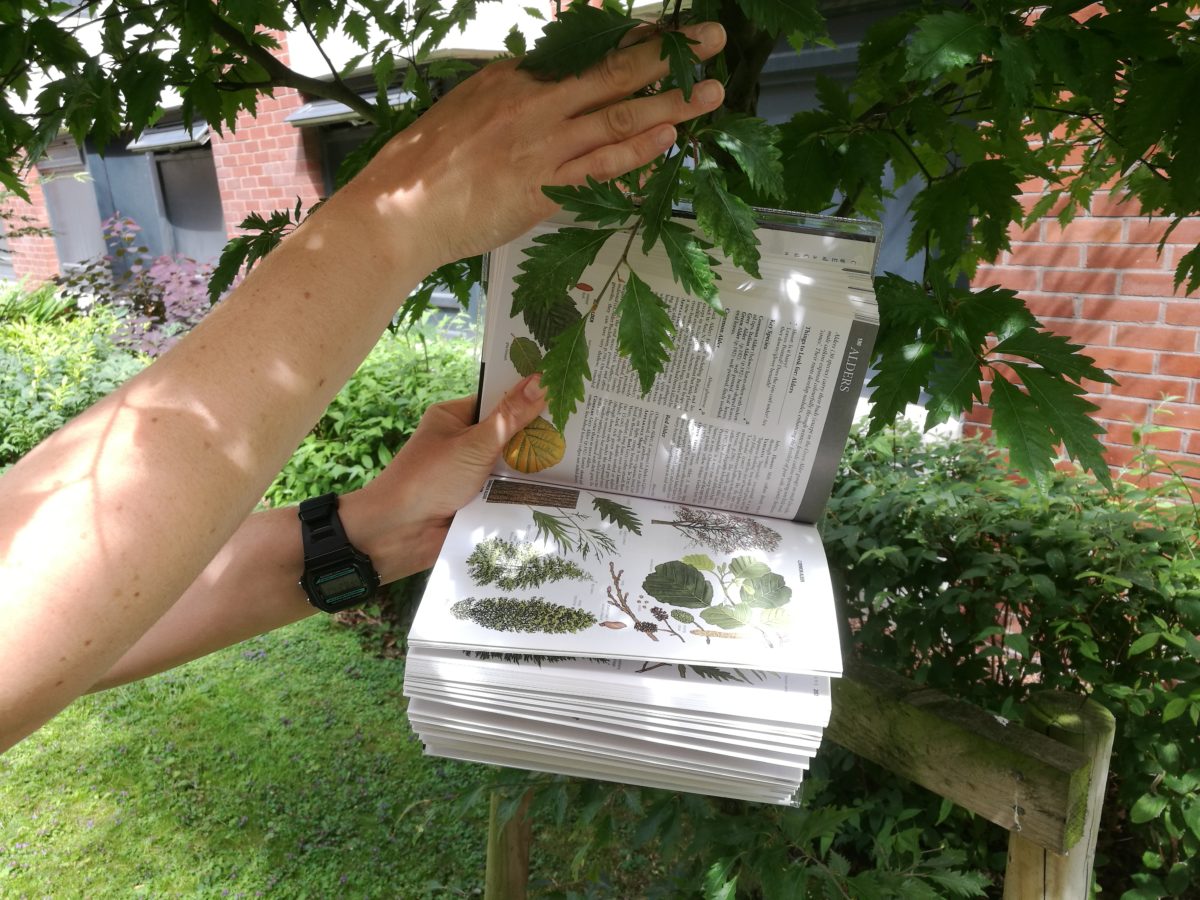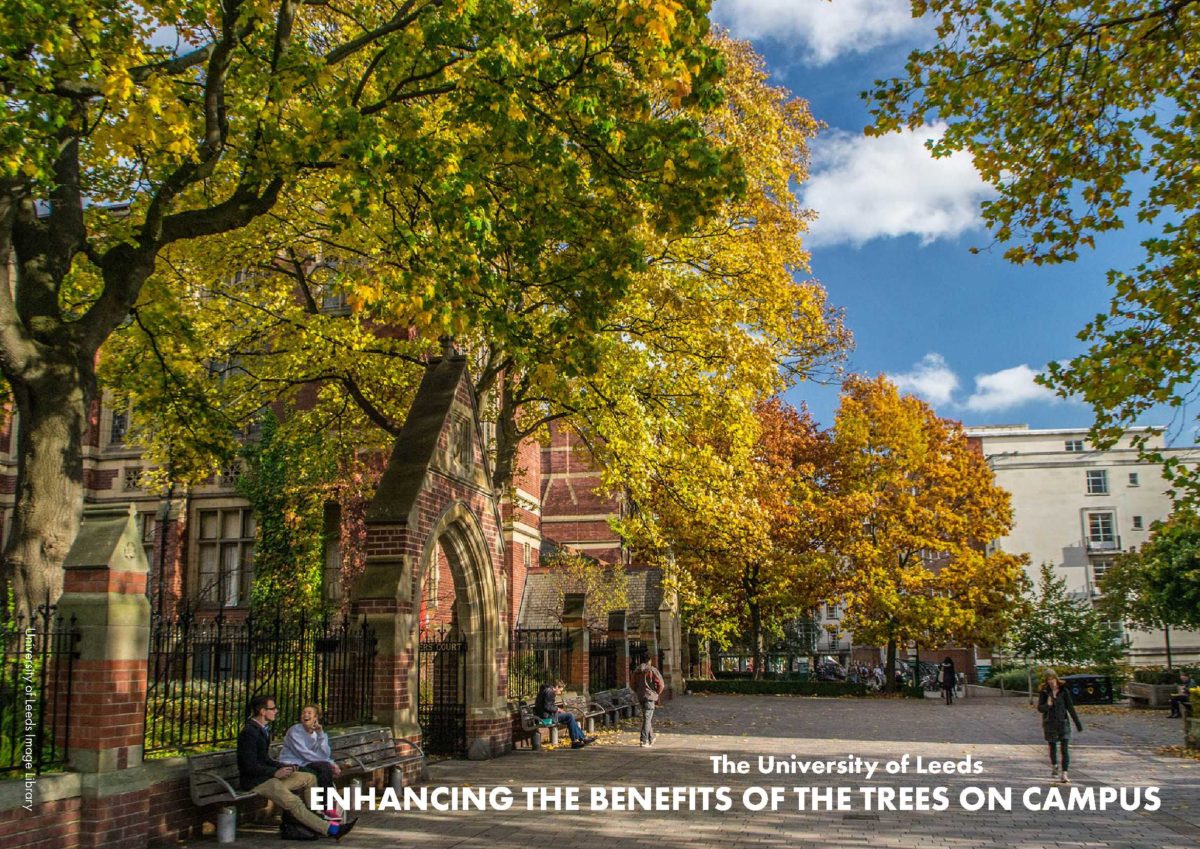i-Tree Leeds: Putting a Value on the City's Trees
As part of the Leeds4Trees project we are exploring the value of trees and green spaces across the city of Leeds, in collaboration with UBoC, the Sustainability Service at the University of Leeds, Leeds City Council, The Woodland Trust, Treeconomics and Forest Research.
Urban green spaces such as gardens, parks and woodlands provide many benefits to people and vital habitats for wildlife. Urban vegetation stores carbon, helping to mitigate climate change, and reduces the likelihood of flooding by storing excess rain water. Green spaces can improve air quality, limit the impact of heatwaves, encourage people to undertake physical activity and reduce depression. However, these benefits are difficult to quantify and compare to other uses of urban land.
During the summers of 2017 and 2018, over 1400 trees were surveyed by volunteer staff and students on the University of Leeds campus, with more than 130 different species identified! That means there is roughly one tree to every 32 people working and studying on campus.

By combining measurements of the trees with software called i-Tree Eco, the LEAF & UBoC team were able to estimate the benefits being provided by the campus trees. Over their lifetimes, the campus trees are estimated to have taken in, and are now storing, over 540 tonnes of carbon (which is almost 2000 tonnes of CO2), the equivalent to the annual carbon footprint for around 180 people living in the UK. Every year, we estimate that the campus trees are removing a further 18 tonnes of carbon (66 tonnes of CO2) from the air - see pages 13-16 of our report.
Trees are able to capture particulate pollution from the air because it sticks to their leaves, needles or bark. Gases in the air, such as nitrogen dioxide and ozone, are taken in through holes on the leaf surface. Due to their big leafy canopies, we estimate that the trees on campus can remove around 350 kg of air pollution per year - for nitrogen oxides in particular, this is equivalent to around 1 million cars driving past the University campus - see pages 17-19 of our report for more details.
We found that the biggest trees on campus are having huge benefits: the largest 100 trees, which make up only 7% of the total number, provide over one third of the total environmental benefits in terms of carbon sequestration, pollution removal and flood risk reduction. When a mature tree is removed, the loss will be compensated by planting three new saplings on campus. We found that it can take around 25 years for those three trees to be generating equivalent benefits to the mature tree they replaced.
Our key recommendations are:
- plant long-lived, large canopy, tree species in locations where soil volume is sufficient for them to grow to their full size
- increase campus canopy cover from 17% to a minimum of 20%
- plan for the potential loss of 8% of the campus trees due to Ash dieback
- protect the existing mature tree stock by a continuation and adoption of good practice measures in tree care and management
A huge thank you to everyone who volunteered to help survey the trees - read our full report here.
The map below shows locations and species of a subset of the trees on the University of Leeds campus and some of the benefits they provide. The map has three layers: 1) Species and measurements, 2) Carbon storage and sequestration, 3) Pollution removal - you can find more information on what this map shows here.
The map is easiest to view one layer at a time. To open a larger version in a new window click on the square icon in the top right corner. To view the map menu click on the window icon in the top left corner of the map.
To enable a layer either tick the box next to the layer name (e.g. Species and measurements) or click on the layer name. The icons contained in that layer will appear on the map. To disable a layer un-tick the box or click on the layer name.
Click on a tree icon or pointer to display information about that tree. Click on a part of the map without an icon to close the tree menu, or click the back arrow in the top left corner.
If you're interested to find out more about the methods, or access some of our data for further research, please contact us at info@uboc.co.uk

